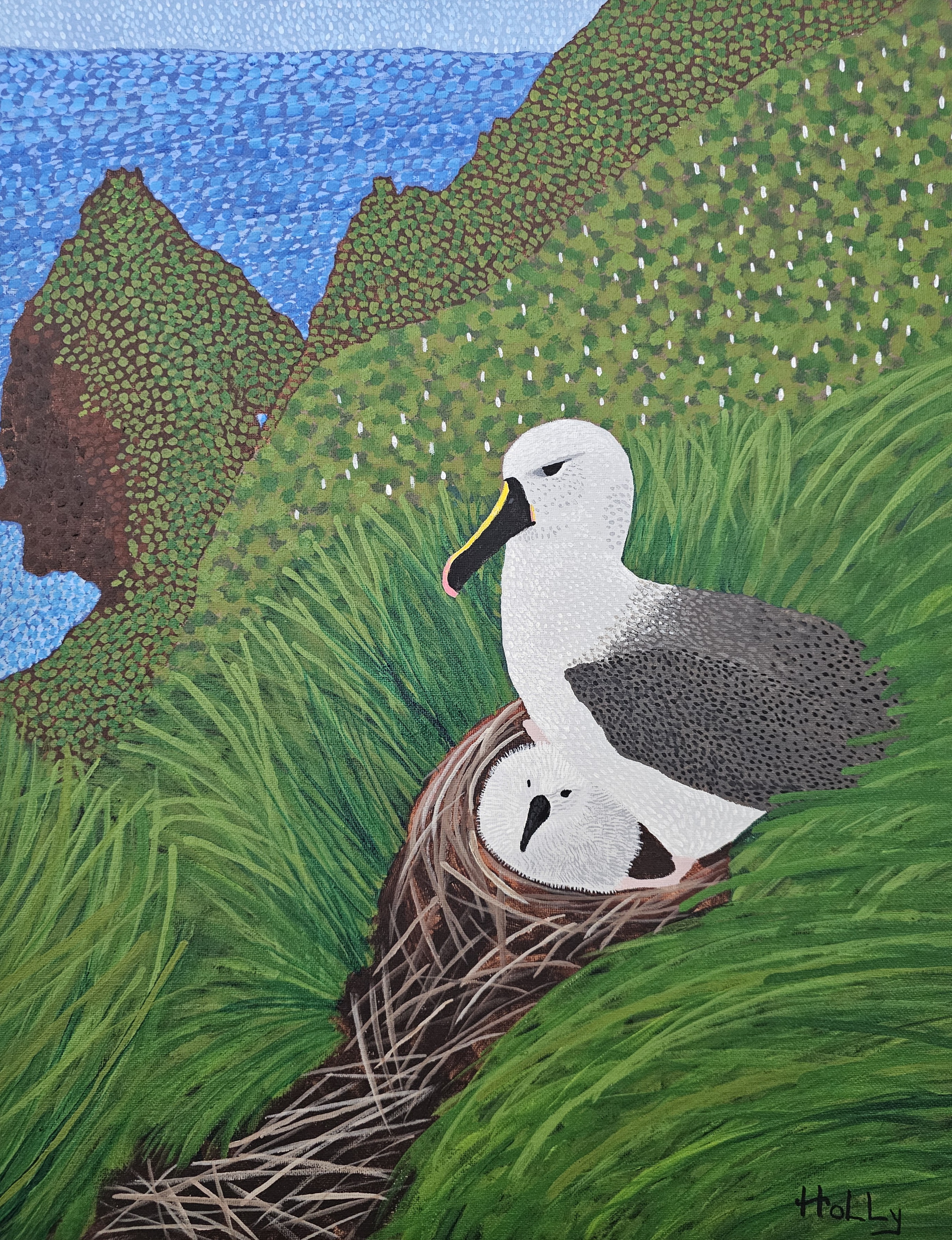 An Indian Yellow-nosed Albatross broods its chick on the Falaises d'Entrecasteaux, Amsterdam Island by Holly Parsons of Artists & Biologists Unite for Nature (ABUN) for World Albatross Day, 19 June 2025, after a photograph by Karine Delord
An Indian Yellow-nosed Albatross broods its chick on the Falaises d'Entrecasteaux, Amsterdam Island by Holly Parsons of Artists & Biologists Unite for Nature (ABUN) for World Albatross Day, 19 June 2025, after a photograph by Karine Delord
Yves Cherel (Centre d’Etudes Biologiques de Chizé, Villiers-en-Bois, France) and colleagues have published in the journal Marine Biology on the diet of the Indian Yellow-nosed Albatross Thalassarche carteri on Amsterdam Island.
The paper’s abstract follows:
“Little is known about the diet of the Indian yellow-nosed albatross Thalassarche carteri, which is one of the few albatrosses that breed both north and south of the Subtropical Front. In this study we aimed to detail its feeding ecology at the subtropical Amsterdam Island that hosts the most important breeding population of the species. Analysis of stomach contents indicated that chicks were fed on fish (84% by fresh mass) and cephalopods (11%), whilst crustaceans and other organisms were minor dietary components. A total of 969 fresh prey items were [sic] identified from the pooled 134 samples. The fish diet of yellow-nosed albatross is diverse (at least 36 taxa) and is dominated by Cubiceps caeruleus (40.2% by number of fish prey), Scomberesox scombroides (31.2%), and Phosichthys argenteus (8.3%). Identification of 2086 accumulated beaks demonstrates a diverse cephalopod diet (34 taxa), which includes mainly oegopsids (30 taxa). The most important squid prey were ommastrephids (44.5% by number of accumulated lower beaks), followed by Histioteuthis atlantica (15.9%) and Ancistrocheirus lesueurii (8.7%). Feather δ13C values indicate that chicks of six breeding seabirds from Amsterdam/Saint-Paul Islands assimilated food of subtropical origin. Using δ15N as a proxy of trophic position, the seabird assemblage is structured along three trophic levels from the rockhopper penguin Eudyptes moseleyi (δ15N = 9.6‰) to the Amsterdam albatross Diomedea amsterdamensis (15.9‰), with the yellow-nosed albatross (14.6‰) being a top predator sharing the same trophic position as the sooty albatross Phoebetria fusca (14.5‰). Anthropogenic-related items were found in 30% of food samples, and their occurrence increased from 1993 (22%) to 2001 (76%). The study sets a baseline for future works on diet, isotopic ecology and plastic contamination of the Indian yellow-nosed albatross across years and various conditions.”
Reference:
Cherel, Y., Trouvé, C., Richard, P. & Weimerskirch, H. 2025. Feeding ecology of the Indian yellow-nosed albatross Thalassarche carteri at the subtropical Amsterdam Island. Marine Biology 172, 56. doi.org/10.1007/s00227-025-04608-5.
John Cooper, Emeritus ACAP Information Officer, 05 August 2025

 English
English  Français
Français  Español
Español